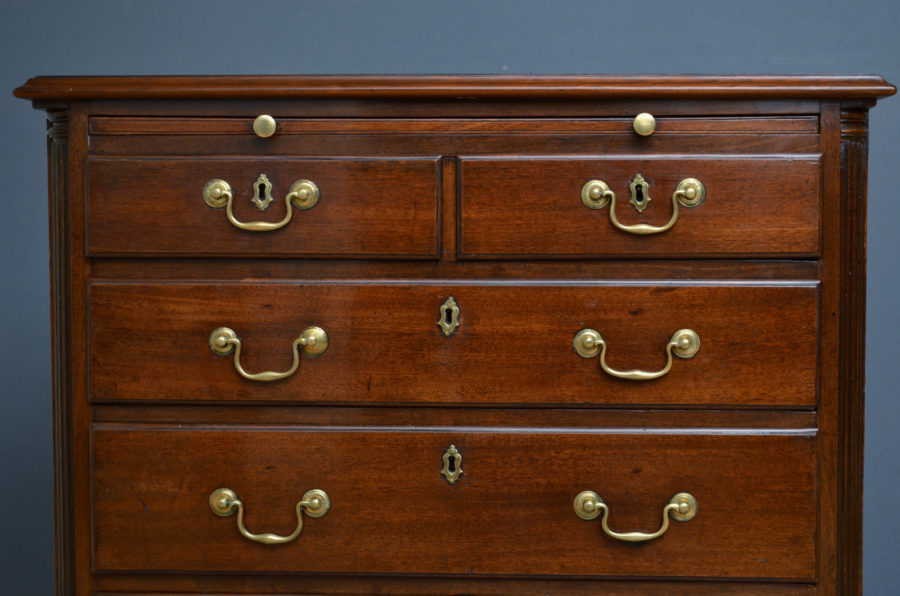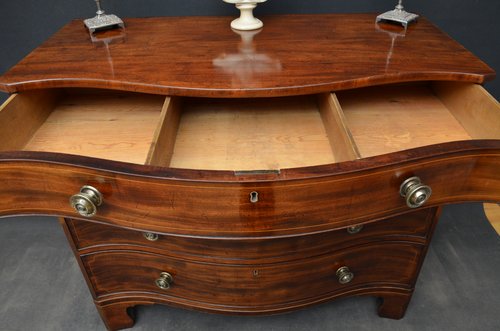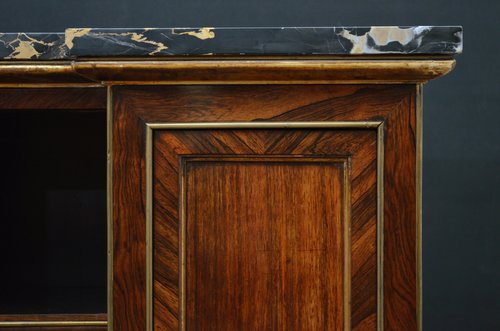
The Georgian era ran from 1714 up until 1837, when Queen Victoria, the final British Monarch of the House of Hanover, was crowned Queen. Beginning the Victorian era.
In reality, the Georgian era does not represent any one style of antique furniture. Rather, a continuum in the evolution of design. It represents a number of distinct styles. From Rococo, to Chippendale, Neoclassicism to Regency, and more. Which we will look at.
However, there was a certain spirit of the Georgian age. There were waves of great flourishing in the arts, literature, design, and architecture. From the musings of the romantic poets, to the striking work of Constable, the lavish landscapes of Capability Brown, to the music of Beethoven and Mozart.
A unique selection of antique furniture for sale.
To my mind something very striking happened throughout the Georgian era, not only in other sectors within the arts, but in the world of furniture design also. The late Georgian era is sometimes referred to as the “golden age of furniture design”.
Indeed, the most valuable antiques that we have with us today, those from the workshop of Thomas Chippendale, are from the Georgian era. And this is hardly surprising, this was an age that embraced such an immense level of master craftsmanship.
This was a time of profound social, political and philosophical change. The church maintained its stronghold and power in Britain. However, this was the age of reason, and enlightenment philosophy. It was also the birth of the industrial revolution.
The cities grew, and the rural towns and villages declined. An integrated national transport system began to develop. The two political party system solidified and intensified.
It was also a time of revolution in the US and France, The seven year war, rebellion in Ireland and the Battle of Waterloo.
In a sense, it was a romantic era of high drama, and of course, fabulous furniture. The walnut, favoured as a cabinet making material, in the era proceeding, was largely replaced by the more versatile mahogany.
The beginning of the Georgian era roughly coincided with the beginning of the what is known as the Age of Mahogany.

The era, which spanned well over a hundred years, is named after its kings, all of whom bar one, were named George. The exception being the last king of the Georgian era, William IV, who reigned from 1830 until 1837.
George I, II, III and IV reigned up until 1830, which includes the Regency Period. During which time, the later day George IV, acted as Prince Regent while his father was incapacitated due to mental and physical illness.
Hence we have the Regency furniture period, within the Georgian era.
As might be expected, there was an increasing anglicisation of the Hanoverian monarchy throughout the Georgian era. George I, who reigned from 1714 to 1727, was born, raised and spent much of his time, in his native Hanover, Germany, even after ascending to the throne of Great Britain.
By the time that George III, who reigned from 1760 to 1820, came to power, we had a far more British monarchy once more, the proceeding kings having being born and raised on British soil.

All of the usual rules apply, look for dovetailing, square headed nails, mixed materials and hand finishing. Look for high quality finishes, and a high standard of craftsmanship.
Early Georgian was slightly heavier, and related more to the earlier Queen Ann and William and Mary styles. Chinoiserie was of course popular, and as time went, on Italian Palladian design began to influence furniture design in the early to mid Georgian era.
The influence of Baroque, and Late Baroque, also known as “Rococo” began to emerge. Rococo was embraced by Chippendale, who also embraced Gothic design influences, and Chinoiserie, before moving more toward Neoclassicism later in his career.
Neoclassicism took hold during the mid-later Georgian period, influenced by the architect Robert Adams et al. Also by the growing upper-middle classes, who embarked increasingly upon the grand tour of Europe, taking in the delights of antiquity along the way.
The later Regency styles built upon Neoclassicism. Rosewood veneers became popular, as did marble tops. The fashion for looking back to classicism continued. Egyptian motifs and designs began to feature, alongside other more exotic influences, which continued into the Victorian era.
Regency furniture feels classical, but lighter and more refined somehow than the earlier Georgian styles. Lines were simpler, and upholstery fabrics were slightly more demure in colour.
At Nimbus Antiques we have one of the finest selections of Georgian antique in the North West. Feel free to drop in to learn more from our team of leading experts in Georgian antique furniture.
| Cookie | Duration | Description |
|---|---|---|
| cookielawinfo-checbox-analytics | 11 months | This cookie is set by GDPR Cookie Consent plugin. The cookie is used to store the user consent for the cookies in the category "Analytics". |
| cookielawinfo-checbox-functional | 11 months | The cookie is set by GDPR cookie consent to record the user consent for the cookies in the category "Functional". |
| cookielawinfo-checbox-others | 11 months | This cookie is set by GDPR Cookie Consent plugin. The cookie is used to store the user consent for the cookies in the category "Other. |
| cookielawinfo-checkbox-necessary | 11 months | This cookie is set by GDPR Cookie Consent plugin. The cookies is used to store the user consent for the cookies in the category "Necessary". |
| cookielawinfo-checkbox-performance | 11 months | This cookie is set by GDPR Cookie Consent plugin. The cookie is used to store the user consent for the cookies in the category "Performance". |
| viewed_cookie_policy | 11 months | The cookie is set by the GDPR Cookie Consent plugin and is used to store whether or not user has consented to the use of cookies. It does not store any personal data. |